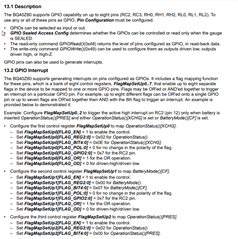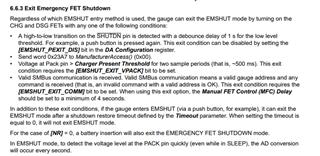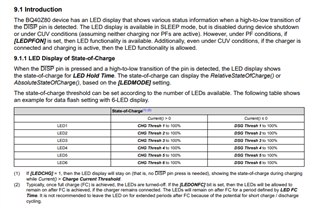Tool/software:
1. Can we configure the GPIO pins of the BQ40z80 to perform our specific task like enable/disable of charge/discharge ? I want them to communicate with MCU based on some conditions it needs to be performed. How to make the BQ40z80 perform based on the commands of the MCU ?
2. Can we connect the WAKEUP and SHUTDOWN pin of BQ40z80 to a single push button with different time interval of push for wakeup and shutdown ?
3. Can we perform the above function using MCU which in turn will be able to control the BQ40z80, if so how to make the BQ40z80 controllable by MCU, is there any reference or manual ?







